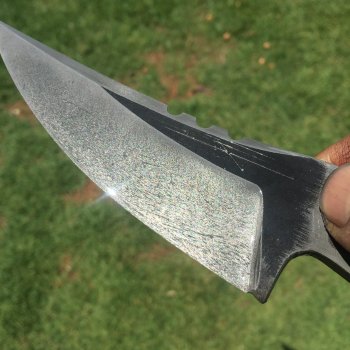Well, it would probably be much more accurate to say that I could rival a research company's lab from about 30 years ago. I am just a bladesmith and am no where near wealthy enough to afford any of the equipment that you would find in a modern lab. So I have gotten good at finding, and refurbishing, old equipment that those labs are done with. It really has no practical application in bladesmithing, but it is really handy in my side hobby/obsession of ferrous metallurgy.
The safest part of that question to answer is the surest- it is all about the heat, and those extra cycles, when done right, can make some definite changes. Now on the hammer side of the equation I must be much more cautious, interesting things can happen but it would be irresponsible to make any sort deeper connections, when it is still all about the heat, even when the hammer is doing things; beating on steel without heat only induces needless strain, both in you and the steel.

